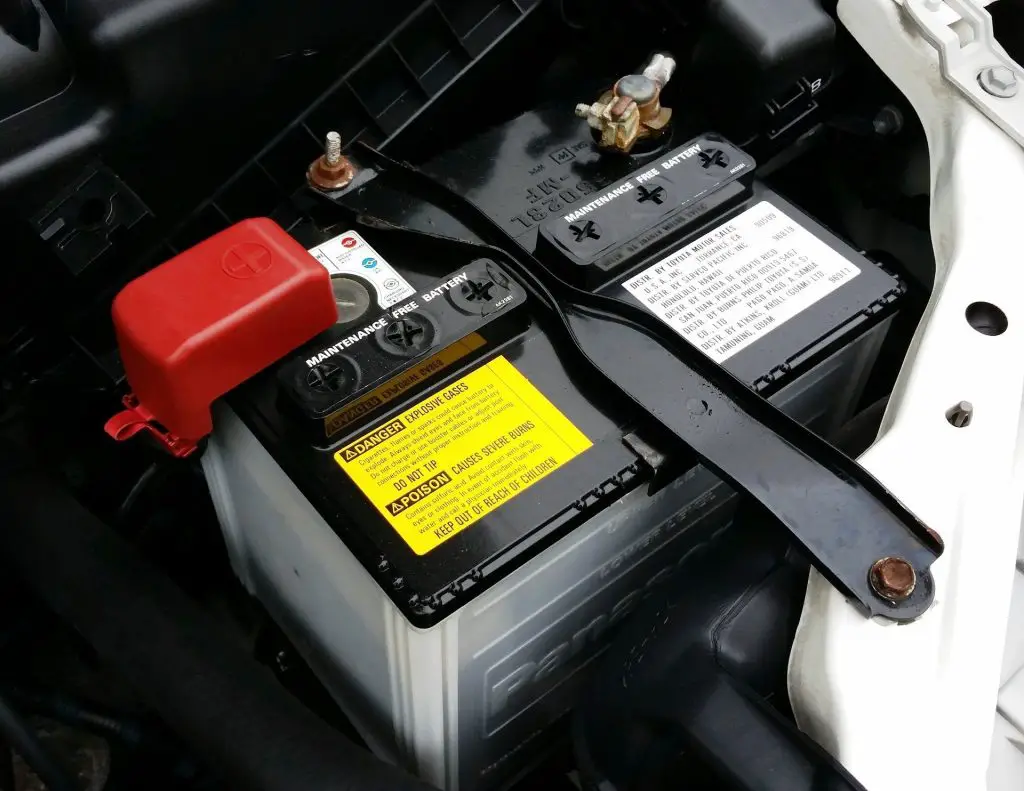Your car battery is responsible for starting the engine and ensuring your car’s electrical functions work as intended.
Like most parts of your vehicle, your battery needs the top level of care and attention. This ensures you won’t suffer from a dead battery while cruising down the roads in the UK. You don’t want that stomach-churning feeling of trying to start a car on a cold and dark morning… and then failing to start it. Right?
Halfords, the leading retailer of cycling, motoring, and leisure products and services in the UK, revealed that a flat battery is one of the most common causes of vehicle breakdown during winter. Therefore, learn how to check a car battery, so it stays in peak performance and keeps you from being stranded.
Why you need to check your car battery

Checking your battery occassionally is one of the most important preventative care tips you can do.
After being idle for a few hours, many cars have trouble starting, leaving millions of motorists stranded. As a result, checking your car battery before going on a trip and before winter sets in is an important safety precaution.
Now, to achieve the maximum performance of your car battery, you should tap on the services of a mechanic. They should conduct a battery load test, preferably every month. By doing this, you can ensure that the battery can charge appropriately even during extreme weather conditions.
How to test a car battery?

You can test your car’s battery even if you don’t have a multimeter.
If your car fails to start on a cold morning, as it usually does, it is safe to assume that you have a flat battery. Therefore, read this guide to keep your battery from going flat right when you need your car the most.
Even if you have a modern car equipped with maintenance-free features, checking your batteries regularly is still a good practice to prevent it from going flat.
You can test a car battery with multimeter or without multimeter.
Below are three ways you can check your car battery:
Use a voltmeter
- Turn the ignition on and remove the battery’s positive terminal cover. It is better if you clean the battery terminals while doing this step.
- Now, connect the positive lead of your voltmeter to the positive terminal on your battery. Take note that the positive lead on a voltmeter is mostly red.
- Next, attach the negative voltmeter lead to the negative battery terminal and finally, read the voltmeter.
- The ideal reading should be between 12.4 and 12.7 volts. Anything below 12.4 means you should start charging your car battery.
Test a battery using a power probe
- You can do this by removing the battery’s positive terminal cover.
- Next, connect the positive lead of the power probe to your battery’s positive terminal (usually coloured red).
- Third, attach the negative lead of your power probe to the negative battery terminal.
- After that, connect the tip of your probe to the positive battery terminal.
- You can read the voltage reading by checking the probe. A reading between 12.4 and 12.7 means your battery is in good shape.
Check it by cranking the engine
This is done by turning the ignition until the starter engages.
- You should hold for two seconds and have someone crank the engine while you check the battery voltage drop.
- During cranking, you can now check the reading of the power probe.
- The reading should not go below 9.6 volts. Lesser than that means the battery is sulphated and is not accepting/holding the charge.
Related:
Conclusion
While car breakdowns are inevitable, you can actually prevent them. Check out our car care checklist to keep your car in good condition.
Proper car maintenance is the key component to having a reliable car even in extreme weather conditions. Therefore, knowing how to check a car’s battery is a skill that every motorist should have.
With today’s harrowing weather conditions, you don’t want to be stranded by the side of the road due to a flat battery.



